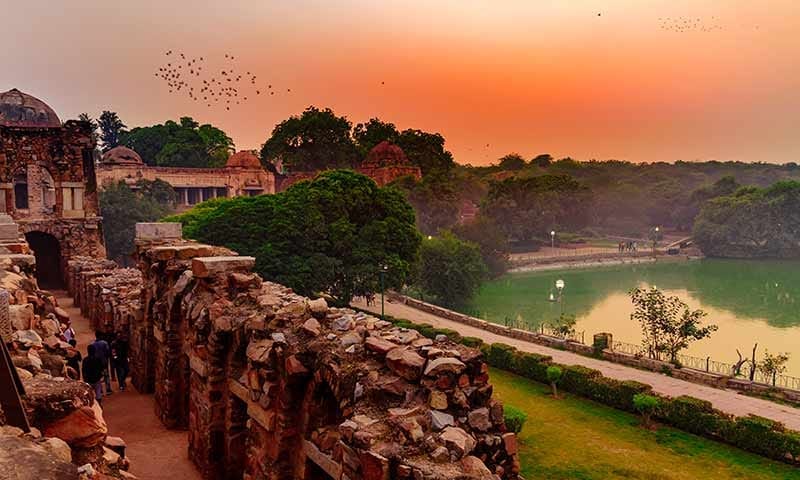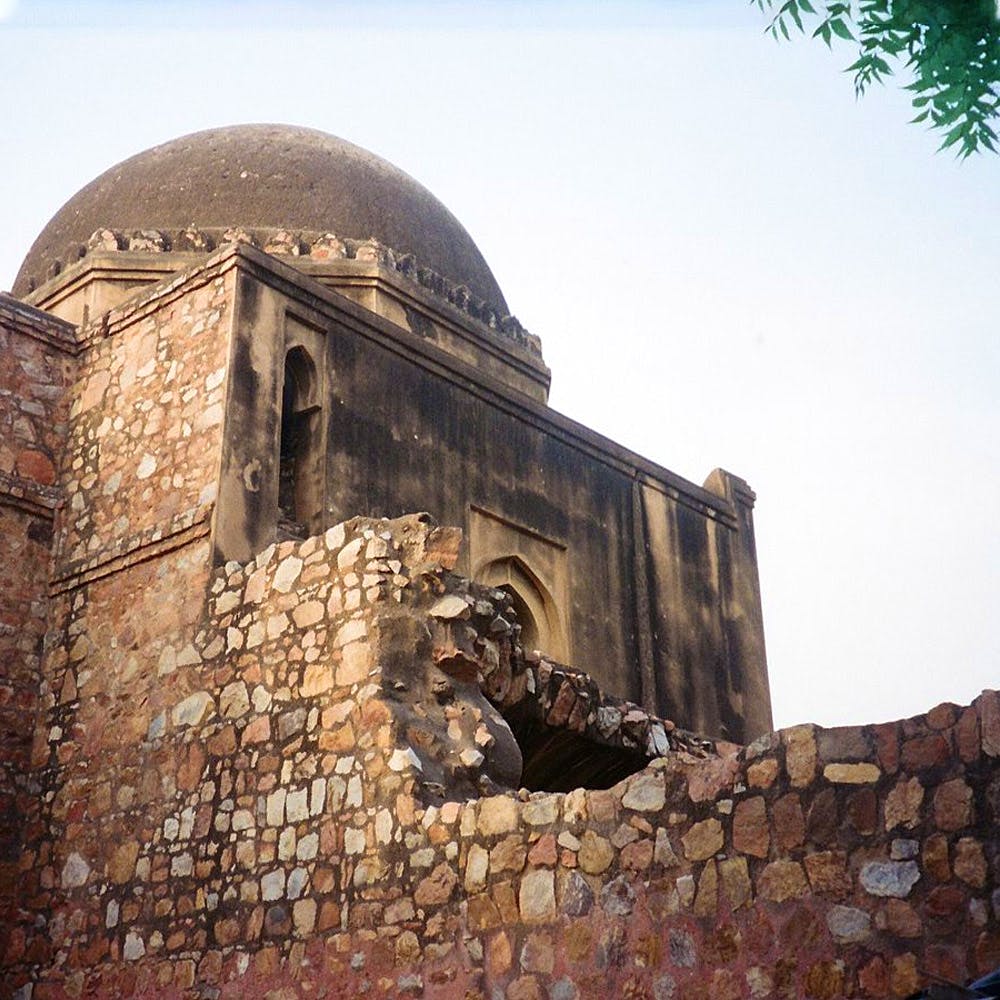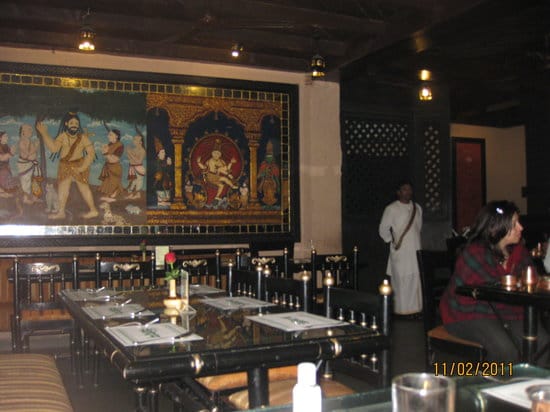Hauz Khas

Hauz Khas Complex, located in the Southern part of Delhi, is a historical and cultural hub renowned in equal parts for its ancient monuments and modern establishments. This article looks into the fascinating history, architectural features, and cultural significance of Hauz Khas Village.
History:
Hauz Khas Village dates back to the 13th century. It was built during the reign of Sultan Alauddin Khalji, the second ruler of the Khalji dynasty in the Delhi Sultanate. The area was initially developed as a reservoir complex known as Hauz-i-Alai, which served as a water tank to supply water to the nearby Siri Fort, then the capital of the Delhi Sultanate. The name "Hauz Khas" translates to "royal tank" in Urdu.
The reservoir was built in 1296 by Alauddin Khalji to meet the water needs of the burgeoning population of Siri Fort and city. It covered an extensive area and was fed by rainwater harvested from the surrounding hills. The reservoir's construction included a madrasa (Islamic school) and a mosque, which formed part of the complex.
The reservoir was named Hauz-i-Alai after Khalji, but during the reign of Firoz Shah Tughlaq in the 14th century, the Hauz Khas complex underwent further development and expansion. Firoz Shah built several structures around the reservoir, including pavilions, tombs, and a deer park. The area flourished as a centre of Islamic learning and culture, attracting scholars, poets, and intellectuals from all across the region.
Over the centuries, Hauz Khas witnessed periods of decline and neglect, leading to the deterioration of its architectural heritage. However, in the late 20th century, efforts were made to revive and restore the area.
DLF took on the responsibility of the rejuvenation of the area in the 1960s and renamed it as Hauz Khas enclave, which has led to its transformation into the vibrant urban village it is today. Towards the 1980s, indigenous fashion labels began setting up shop, which had a knock-on effect that led to the creation of the bustling commercial hub that exists today.
Hauz Khas Village holds immense cultural significance as a thriving center of art, culture, and creativity. The area is home to a diverse community of artists, designers, entrepreneurs, and intellectuals, who contribute to its vibrant atmosphere.
The village's narrow lanes are lined with charming cafes, boutique shops, art galleries, and craft studios, offering visitors a glimpse into Delhi's eclectic culture. The area also hosts cultural events, art exhibitions, music performances, and literary festivals, attracting both locals and tourists alike.
Moreover, Hauz Khas Village serves as a melting pot of cultures, where the traditional meets the contemporary, and heritage blends with innovation. Its eclectic mix of ancient monuments and modern architecture has something for everyone.
As a vibrant urban enclave, Hauz Khas Village continues to evolve and thrive, serving as a hub of creativity, innovation, and cultural exchange. Its historical significance, architectural splendor, and lively ambiance make it a must-visit destination for anyone seeking to explore the cultural treasures of Delhi.
Architectural Features
Hauz-i-Alai Reservoir: The centrepiece of Hauz Khas Village is the historic reservoir, built of stone and masonry, once supplied water to the surrounding areas and played a crucial role in sustaining life in the region.

Madrasa and Mosque: Adjacent to the reservoir are the ruins of a medieval madrasa and mosque, which were integral parts of the complex. These structures feature intricate Islamic architectural elements, including ornate arches, calligraphic inscriptions, and decorative motifs, showcasing the artistic sophistication of the period.
Tombs and Pavilions: The Hauz Khas complex is dotted with several tombs and pavilions built during different periods of its history. These structures are of both Mughal and Tughlaq architectural traditions, an indicator of the times that they have lived through. The tombs, in particular, are adorned with intricate carvings, marble embellishments, and domed roofs. Firoz Shah Tughlaq's tomb rests here, attached to a madrasa that he built in the 14th century.
Aditya Nath Jha Deer Park: The Deer Park in Hauz Khas, Delhi, is located within the Hauz Khas Village complex, this park is not only a haven for deer but also a popular recreational spot for locals and tourists alike. It dates back to the 14th century during the reign of Firuz Shah Tughlaq, the Sultan of Delhi. Firuz Shah Tughlaq was known for his love of nature and wildlife, and he established the Deer Park as part of the larger Hauz Khas complex. The park was originally created to serve as a royal hunting ground and a sanctuary for various species of deer. True to its name, the park is home to a healthy population of the Spotted deer Visitors can observe these majestic animals in their natural habitat within designated enclosures.
Rose Garden: Located within the same biodiversity park as the Deer Park, The Rose Garden in Hauz Khas is a charming botanical haven renowned for its exquisite collection of roses and lush greenery. The Rose Garden boasts a diverse collection of roses, including hybrid tea roses, floribunda roses, miniature roses, and climbers. The roses create a visual feast for visitors and double up as a delightful backdrop for photography. The pathways are diligently landscaped and the garden has patches of flower beds and manicured lawns that enhance its aesthetic appeal and give visitors a serene and tranquil environment to wind down in. Benches and seating areas are strategically placed throughout the garden, inviting visitors to pause and enjoy the beauty of their surroundings. Adding to the garden's allure are ornamental fountains, cascading waterfalls, and tranquil ponds adorned with water lilies and aquatic plants. These water features attract birds and wildlife, adding to the park's floral and faunal diversity.
Contemporary Architecture: In addition to its historical monuments, Hauz Khas Village boasts a mix of contemporary architecture, including cafes, boutiques, art galleries, and studios. These modern structures seamlessly blend with the ancient ruins, creating a unique and quite beautiful juxtaposition of old and new.
Nearby Attractions
Siri Fort

The Siri Fort, or Siri, was one of the seven cities of medieval Delhi built by various rulers over time. It was constructed during the reign of Sultan Alauddin Khilji in the 14th century. The fortification served as the seat of the Delhi Sultanate's power and played a crucial role in defending the kingdom from invaders. It witnessed several significant historical battles, the most significant being the invasion of Timur in 1398, during which the fort suffered extensive damage. Siri Fort could not withstand the onslaught, highlighting the military prowess of Timur's forces and the decline of the Delhi Sultanate.
Kiran Nadar Museum of Art
The Kiran Nadar Museum of Art (KNMA) is a prominent art museum established by Kiran Nadar, an avid art collector and philanthropist with the aim of promoting contemporary and modern Indian art and to create a platform for emerging and established artists to showcase their talent to the world. KNMA boasts an extensive collection of Indian art, including paintings, sculptures, photographs, and new media installations. The collection spans various genres, styles, and periods, showcasing the evolution of Indian art from traditional to avant-garde expressions. It features works by renowned artists such as M.F. Husain, F.N. Souza, Tyeb Mehta, Bharti Kher, Subodh Gupta, and many others.
Jahanpannah Forest
Jahanpanah City Forest was developed on a vast tract of land that was once part of the medieval city of Jahanpanah, built by Sultan Muhammad bin Tughlaq in the 14th century. The forest area was originally designed to serve as a hunting ground and leisure retreat for the royal family and nobility. Parts of the forest have been cleared for agriculture and urban development. In the 20th century, efforts were made to conserve and restore the remaining green cover, leading to the establishment of Jahanpanah City Forest as a protected area for biodiversity conservation and recreational purposes. The forest boasts a network of well-maintained walking trails and pathways that wind through the dense vegetation, allowing visitors to explore the area's natural beauty at their own pace.
Sanjay Van
Sanjay Van, offers a tranquil escape from the bustling city life, with its verdant landscapes, dense foliage, and diverse wildlife. Sanjay Van is vital for the city's ecosystem, acting as a green lung and preserving native flora and fauna. Visitors can enjoy leisurely walks, birdwatching, and nature photography amidst its serene surroundings.
Food in Hauz Khas
Yeti, The Himalayan Kitchen

Yeti, The Himalayan Kitchen is a renowned restaurant located in Hauz Khas Village, Delhi, known for its authentic Nepalese and Himalayan cuisine. Some of their best food items are their rich variety of momos, their Thukpa, Kewa Datshi, Tingmo, Dal Bhat, Gundruk and their serving of Yak Meat. The reflects the rustic charm and warmth of the Himalayan region. The restaurant is adorned with traditional Nepalese and Tibetan décor, including prayer flags, thangka paintings, and wooden furnishings, creating an inviting and cozy atmosphere for diners.
Rajinder Da Dhaba
This place isn't just a restaurant, but an institution. Rajinder Da Dhaba started off as a small shop, only to grow into the humgous eatery it has become today. Their naans are fluffy and crunchy at the same time, while their Butter Chicken is simply to die for. Pair those with a Dal Makhani and get ready to indulge in some gluttony.
Kulfiano

Kulfiano is a popular dessert destination located in the vibrant Hauz Khas Village of Delhi. Specializing in artisanal kulfi, Kulfiano's menu is, much like Hauz Khas itself, a mix of tradition and innovation. There flavours include Jamun, Malai, Kesar Pista, Paan and Chocolate. One of their specialties, the Mango Kulfi, takes inspiration from Kuremal in Chandni Chowk and stuffs mango-flavoured kulfi within an actual mango.Kulfiano also offers customization options, allowing customers to create their own unique kulfi creations.
Elma's Bakery, Bar & Kitchen
This is a renowned establishment located in the heart of Hauz Khas Village, Delhi. Known for its charming ambiance, and delightful desserts, Elma's has earned a reputation as a beloved destination for food enthusiasts, social gatherings, and special occasions. Named after the owner's family dog. Elma's offers a diverse menu inspired by European and Continental culinary traditions, with a focus on fresh, locally sourced ingredients and homemade preparations. Some of the highlights of Elma's menu include classic breakfast favorites such as fluffy pancakes, eggs Benedict, French toast, and hearty omelets, served with a variety of accompaniments and sides and an indulgent afternoon tea experience complete with freshly baked scones, finger sandwiches, pastries, and a selection of premium teas. All of this is rounded off by the vintage decor, which has the ability to transport you to an older, simpler time.
Naivedyam

The dining experience at Naivedyam begins right from its doors, as guests are treated by the warm aroma of traditional spices and the inviting ambiance of a traditional South Indian restaurant. From crispy dosas and fluffy idlis to aromatic biryanis and hearty thalis, every dish is crafted with care and expertise, using fresh, locally sourced ingredients and authentic spices. Niavedyam does classic favorites like masala dosa and rava dosa to innovative creations like cheese burst dosa and paneer tikka dosa. In addition to dosas, Naivedyam also offers a delectable assortment of vegetarian curries, rice dishes, and tiffin items, ensuring there's something for everyone to enjoy. Guests can complement their meal with traditional South Indian beverages like filter coffee and buttermilk, or indulge in a refreshing fruit juice or lassi.
How to Reach Hauz Khas
The most convenient way to reach Hauz Khas is by taking the Delhi Metro. Both Yellow and Magenta lines of the Delhi Metro intersect at Huaz Khas metro station. You can board a metro train on the Yellow Line from various parts of Delhi, including Rajiv Chowk, Central Secretariat, and Gurgaon, and alight at Hauz Khas Metro Station. Hauz Khas is also well-connected by the Delhi Transport Corporation (DTC) bus network. Several bus routes pass through or terminate at Hauz Khas, making it accessible from different parts of Delhi and neighboring areas. You can check the DTC website or use a mobile app to find the most suitable bus route based on your location. Taxis, autos and private cars can also be a good option due to efficient urban planning. Extensive parking options are available in the area, including the parking lot at Hauz Khas metro station and the private parking available outside the different eateries and shops. Regardless of the mode of transportation you choose, Hauz Khas is easily accessible and well-connect

Comments ()